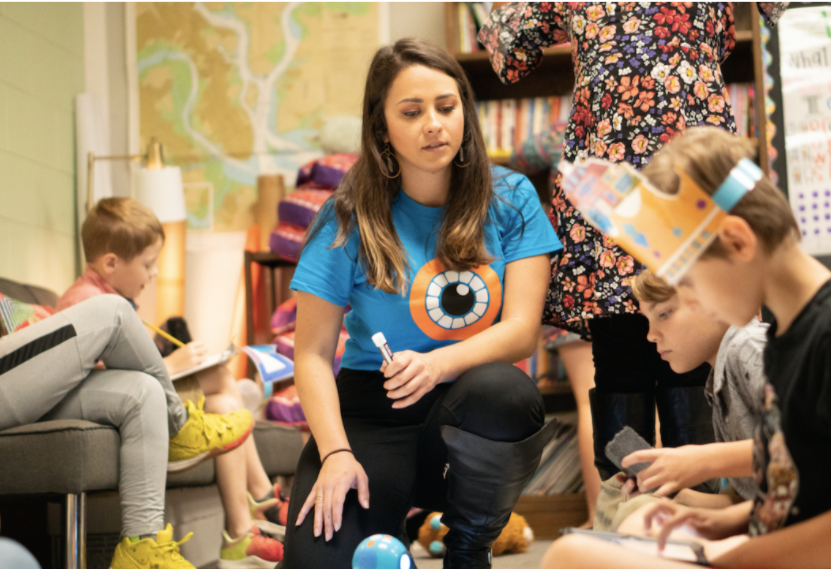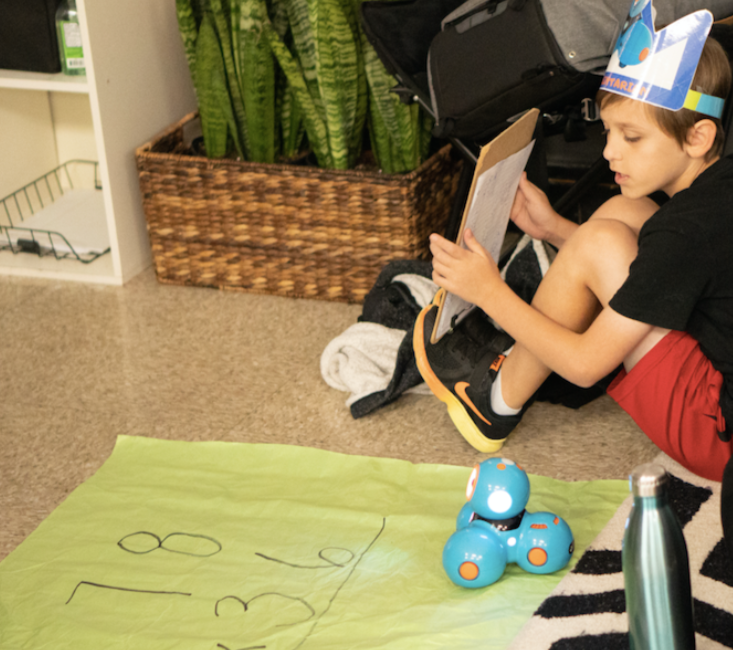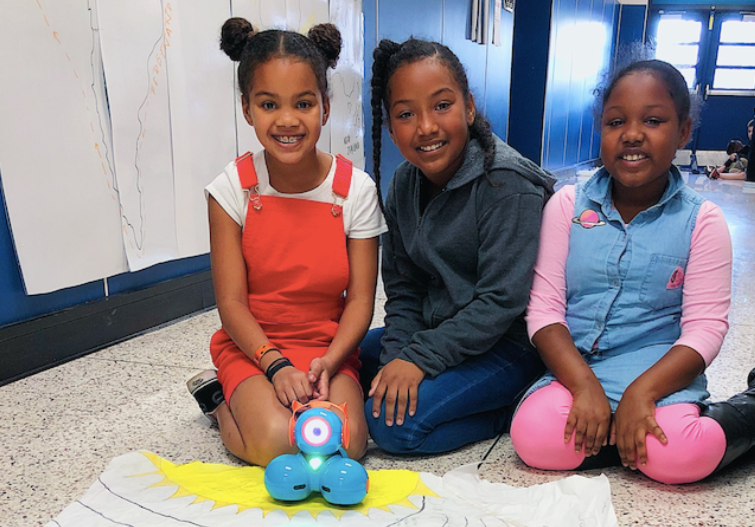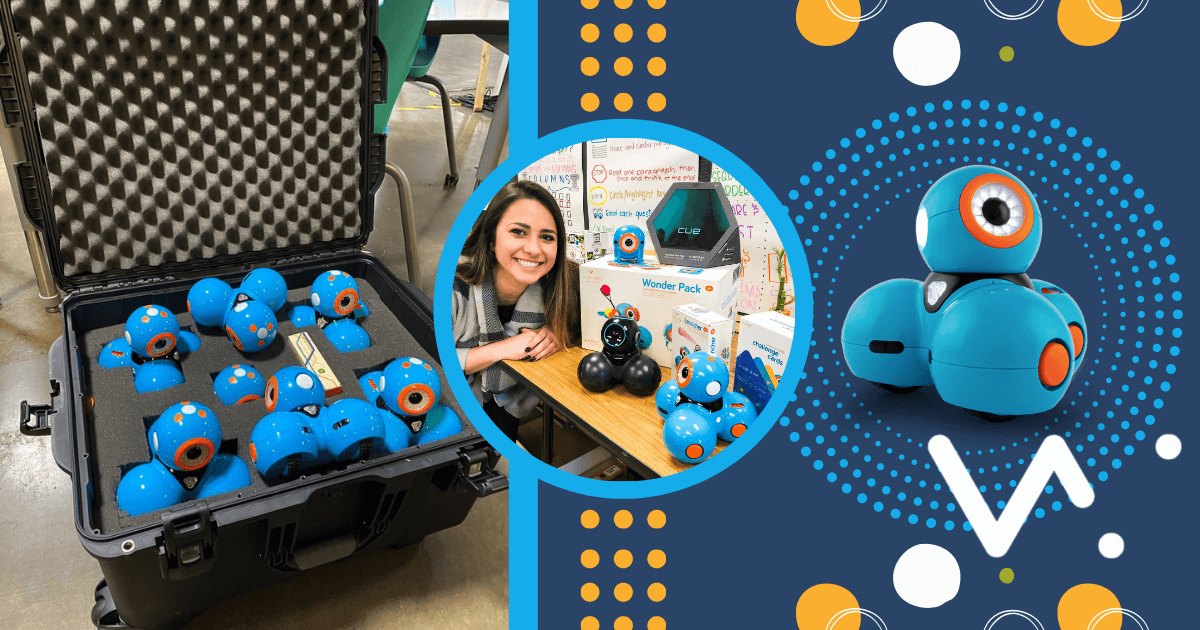Hey, awesome educator! My name is Jasmine Saab! I am a Wonder Workshop ambassador, robotics coach, and fourth grade teacher at a public school in Charleston, SC. This is my third year integrating computer science into my classroom. Luckily for me, I teach all subjects, so this easily allows me to create some pretty fun, cross-curricular lessons. These types of lessons make it possible for me to teach my students about relevant subject area content while also introducing them to the world of computer science and programming—and my favorite coding tools to use are the Dash, Dot, and Cue!
I am very fortunate to be self-contained, therefore I try to combine as many subjects as possible when creating projects that will involve robotics. However, I know that some teachers are departmentalized, so I have created a few lessons for specific subject areas using Wonder Workshop’s robots. You can check out those lessons, by going to this blog post.

Here’s how I get started creating cross-curricular lesson plans for my students. Before I even begin integrating coding into the classroom, I try to give my students enough time to learn through play. I want students to feel comfortable and confident with coding so that they are able to apply their coding skills to our content areas. I allow my students to have unstructured time to explore with the robots during our morning choice activities. Oftentimes, my students surprise me by what they end up producing! I would much rather have them exploring an activity that interests them than completing redundant work every day. This, of course, is just my personal opinion, but I find it really keeps students engaged and excited about school!
Once my students have had the chance to explore the basics of computer programming (using robots like the Dash, Dot, and Cue as well as the Ozobot Evo, Robo Wunderkind, or virtually using the NEW Dash Robot simulator, which officially launched last week, Scratch, or Code.org), I start off with some coding challenges. These challenges could be anything from completing an obstacle course to playing a game and are designed to encourage students to gain fundamental collaboration skills.
After each challenge, we discuss as a class the things that went well during the challenge and the things that didn’t go as planned and we reflect and brainstorm what we can do better next time. Working in teams is necessary for integrating coding and it's important for educators to set these expectations from the beginning.
Now that you (and your students) have the basics down, here are a few things that I keep in mind when applying coding to content areas by creating cross-curricular lessons:
1. The Learning Objective:
- What do I want my students to remember?
- I always unpack standards with my students, so that they know what their learning goal is.
- We write the standard on the board and we reference the unpacked standard many times throughout the lesson.
- Unpacking standards helps create transparency with students by being open and upfront about what they'll gain from the activity.

2. Covering the Standards:
- What standards am I covering and are there any standards that I can combine for this lesson?
- I try to choose a science or social studies standard to start off a project with.
- It is usually pretty easy to apply ELA and math to any coding project.
i. I love to have students read different articles on the subject to familiarize themselves with the lesson’s content.
ii. I also enjoy having my students write their own script or do a writing reflection on the activity.
iii. Math is very easy to apply to any coding lesson because there's a lot of measurement and geometry in coding.
iv. If you are clever, you can also figure out a way to come up with fractions from the code by categorizing the blocks as different parts of the whole code.
- Try to integrate as many subject areas *if possible* to allow for more time to work on projects. It’s also a good idea to talk to related art teachers as well!
3. Assessments:
- How are my students going to demonstrate their knowledge?
- I love having days dedicated to students presenting their projects.
- I try to schedule guests to come and watch the presentations (sometimes I will record presentations and share with parents)!
- I come up with a rubric for each lesson at the beginning of the lesson.
- Sometimes, students will even help me come up with a rubric since we have unpacked the standard together. I like to hear their input on how they want to be graded.

4. Making Technology Meaningful:
- Making sure that I am using technology as an effective tool—simply using technology is not the goal!
- Have everything completed before starting on programming (i.e. maps, scripts, decorations, sequence of events) because, once students start programming, any additional changes that occur later on will most likely mess up the code that the students have already built and they will have to start over.
- I try to have my students complete as much of the lesson prior to starting their coding project because we all know how distracting technology can be!
My favorite way to integrate coding is by having students create a play, whether it is a battle that we are studying in social studies or a play about the steps in the water cycle. I love to see them work together to create such a complex demonstration. I also love to have students program robots to draw a diagram, navigate a chart, or travel around a poster of something important and apply fun coding activities to review games!
Here are some tips for coding in small groups:
1. Assign roles to students in each group! Here are some crowns that I made for students to wear. Download them for free from Teachers Pay Teachers.
2. Keep group sizes as small as possible (3-5 students per group is ideal).
3. If possible, come up with a small demonstration or visual so that students can get an idea of what is required.
Feel free to follow me on Instagram to keep up with what we are doing in my classroom!
Jasmine has found a great amount of success using robotics tools in her instruction. If you like what she shared, we highly recommend giving her a follow on Twitter and Instagram for more insight like this! You can follow us on Twitter and Instagram as well and find all of the Wonder Workshop robotics tools on our store by clicking on the links below!



